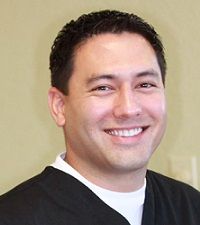Boerne, TX Cosmetic and General Dentist FAQ's Frequently Asked Questions
Are dental X-rays safe and why do I need them?
Many patients have questions about dental xrays and some are concerned about the possible effects of xray exposure. X-rays are an extremely useful diagnostic tool that lets us find things we could not find otherwise. The amount of radiation is minimal and the benefits would far outweigh any reasons to avoid radiation. Below is a fact sheet from the american dental association which also gives comparisons of different xray sources. Keep in mind that we use Digital Xrays and the amount of exposure can be as much as 90% less than traditional dental x-rays.
How do dental X-rays work?
When X-rays pass through your mouth during a dental exam, more X-rays are absorbed by the denser parts (such as teeth and bone) than by soft tissues (such as cheeks and gums) before striking the film. This creates an image called a radiograph. Teeth appear lighter because fewer X-rays penetrate to reach the film. Tooth decay, infections and signs of gum disease, including changes in the bone and ligaments holding teeth in place, appear darker because of more X-ray penetration. Dental restorations (fillings, crowns) may appear lighter or darker, depending on the type of material used for the restoration. The interpretation of these radiographs allows the dentist to safely and accurately detect hidden abnormalities.
How often should radiographs be taken?
How often X-rays (radiographs) should be taken depends on the patient’s individual health needs. It is important to recognize that just as each patient is different form the next, so should the scheduling of X-ray exams be individualized for each patient. Your dentist will review your history, examine your mouth and then decide whether you need radiographs and what type. If you are a new patient, the dentist may recommend radiographs to determine the present status of the hidden areas of your mouth and to help analyze changes that may occur later. If you have had recent radiographs at your previous dentist, your new dentist may ask you to have the radiographs forwarded.
The schedule for needing radiographs at recall visits varies according to your age, risk for disease and signs and symptoms. Recent films may be needed to detect new cavities, or to determine the status of gum disease or for evaluation of growth and development. Children may need X-rays more often than adults. This is because their teeth and jaws are still developing and because their teeth are more likely to be affected by tooth decay than those of adults.
What are the benefits of a dental radiograph examination?
Many diseases of the teeth and surrounding tissues cannot be seen when your dentist examines your mouth. An X-ray examination may reveal:
- small areas of decay between the teeth or below existing restorations (fillings);
- infections in the bone;
- periodontal (gum) disease;
- abscesses or cysts;
- developmental abnormalities;
- some types of tumors.
Finding and treating dental problems at an early stage can save time, money and unnecessary discomfort. It can detect damage to oral structures not visible during a regular exam. If you have a hidden tumor, radiographs may even help save your life.
How do dental X-rays compare to other sources of radiation?
We are exposed to radiation every day from various sources, such as frequent airplane travel and high altitudes, minerals in the soil, and appliances in our homes (like smoke detectors and television screens).
*A millisievert (mSV) is a unit of measure that allows for some comparison between radiation sources that expose the entire body (such as natural background radiation) and those that only expose a portion of the body (such as radiographs).
How to Floss
Flossing is so important, and according to some studies it has even been proposed that it could possibly add up to 2 years to a lifetime. I think that often times when people floss they may not be getting the full benefit because of technique. Here is a video that I came across that gives a nice description.
How to Floss Your Teeth
What causes bad breath?
Whether you call it bad breath or halitosis, it's an unpleasant condition that's cause for embarrassment. Some people with bad breath aren't even aware there's a problem. If you're concerned about bad breath, see your dentist.We can help identify the cause and, if it's due to an oral condition, develop a treatment plan to help eliminate it.
What you eat affects the air you exhale. Certain foods, such as garlic and onions, contribute to objectionable breath odor. Once the food is absorbed into the bloodstream, it is transferred to the lungs, where it is expelled. Brushing, flossing and mouthwash will only mask the odor temporarily. Odors continue until the body eliminates the food. Dieters may develop unpleasant breath from infrequent eating.
If you don’t brush and floss daily, particles of food remain in the mouth, collecting bacteria, which can cause bad breath. Food that collects between the teeth, on the tongue and around the gums can rot, leaving an unpleasant odor.
Bad breath can also be caused by dry mouth (xerostomia), which occurs when the flow of saliva decreases. Saliva is necessary to cleanse the mouth and remove particles that may cause odor. Dry mouth may be caused by various medications, salivary gland problems or continuously breathing through the mouth. If you suffer from dry mouth, we may prescribe an artificial saliva, or suggest using sugarless candy and increasing your fluid intake.
Tobacco products cause bad breath and sweeter smelling breath is just another benefit of quitting.
Bad breath may be the sign of a medical disorder, such as a local infection in the respiratory tract, chronic sinusitis, postnasal drip, chronic bronchitis, diabetes, gastrointestinal disturbance, liver or kidney ailment. If we determine that your mouth is healthy, you may be referred to your family doctor or a specialist to determine the cause of bad breath.
Maintaining good oral health is essential to reducing bad breath. Schedule regular dental visits for a professional cleaning and checkup. If you think you have constant bad breath, keep a log of the foods you eat and make a list of medications you take. Some medications may play a role in creating mouth odors. Let your dentist know if you’ve had any surgery or illness since your last appointment.
Brush twice a day with to remove food debris and plaque. Brush your tongue too, especially the very back part toward your throat. Once a day,or twice if you are ambitious, use floss or an interdental cleaner to clean between teeth.
Mouthwashes are generally cosmetic and do not have a long-lasting effect on bad breath. If you must constantly use a breath freshener to hide unpleasant mouth odor, call us. If you need extra help in controlling plaque, we may recommend using a special antimicrobial mouth rinse. A fluoride mouth rinse, used along with brushing and flossing, can help prevent tooth decay.
Is dental fluoride safe?
In my professional opinion, yes flouride is safe and very beneficial. The professional strength fluoride that we administer to patients is about 10 times more potent than anything patients get in toothpaste. The particular kind of fluoride that we use has ACP(amorphous calcium phosphate) as an ingredient, and is currently the only one on the market to do so. This ingredient can be thought of like liquid tooth structure. It is the building blocks of our tooth enamel. It can help reverse shallow cavities and decrease tooth sensitivity.
-below is our American Dental Associations stance on fluoride-
Fluoridation of community water supplies is safe. This has been the American Dental Association's (ADA) policy since 1950. The ADA's policies regarding community water fluoridation are based on the overwhelming weight of credible scientific evidence.
This body of knowledge is based on the efforts of nationally recognized scientists who have conducted research using the scientific method, have drawn appropriate balanced conclusions based on their research findings and have published their results in refereed (peer-reviewed) professional journals that are widely held or circulated such as The Journal of the American Medical Association and the American Journal of Public Health. Studies showing the safety of water fluoridation have been confirmed by independent scientific studies. Fluoride is nature's cavity fighter occurring naturally in the earth's crust in combination with other minerals found in soil and rocks. Small amounts of fluoride occur naturally in all water sources. Water fluoridation is the process of adjusting the natural level of fluoride to a concentration sufficient to protect against tooth decay (0.7 to 1.2 parts per million). Fluoride in these low concentrations is not toxic or harmful. Throughout more than 55 years of research and practical experience, the overwhelming weight of credible scientific evidence has consistently indicated that fluoridation of community water supplies is safe. The possibility of any adverse health effects from continuous low-level consumption of fluoride has been and continues to be extensively studied. Of the hundreds of credible scientific studies on fluoridation, none has shown health problems associated with the consumption of optimally fluoridated water.
In 2000, the U.S. Surgeon General David Satcher wrote in his report, Oral Health in America, Community water fluoridation is safe and effective in preventing dental caries in both children and adults. Water fluoridation benefits all residents served by community water supplies regardless of their social or economic status. Additionally, the Centers for Disease Control and Prevention and the National Institute of Dental and Craniofacial Research continue to support water fluoridation as a safe method of preventing tooth decay in people of all ages. Based on data for 2000, approximately 162 million people (two-thirds of the population) in the United States are served by public water systems that are fluoridated. The ADA, along with state and local dental societies, continues to work with federal, state, and local agencies to increase the number of communities benefiting from water fluoridation. For more information regarding fluoride and fluoridation, visit the American Dental Association's Fluoride and Fluoridation Web site at http://www.ada.org/goto/fluoride.
Do you take my dental insurance?
We will file claims to any PPO and Indemnity dental insurance that will allow us to do so for our patients. There are numerous types of dental insurance that all have different guidelines and vary from plan to plan. We have patients with a large array of different insurance carriers. We are part of the Connection Dental Network which many payors use. You can call your insurance plan and ask if they utilize the Connection Dental Network. You may also call us at 830-331-5163 if you have questions..
Do your white composite fillings or dental sealants contain BPA?
Although some dental sealants and fillings will contain BPA(or bisphenol-A) or materials that break down to BPA, our filling materials do not. We have verified with the manufacturers of our filling materials that none of our filling or sealant materials will release any BPA into our patients mouths.


